Posted on
Putting learning science in practice: Using examples and non-examples
Categories: Teaching Practice, Cognitive Science
This blog post is part of an ongoing series highlighting the work of our Learning by Scientific Design Network, a group of 10 educator-preparation programs focused on equipping teacher-candidates with our best scientific understanding of how students learn. Here, we explore one scenario that illustrates how teachers can use learning science to guide these decisions.
Have you ever seen an interaction like this in a classroom?


We’ve all probably seen (or experienced) the “Who can read me what the textbook says?” approach to introducing something new. However, you may not have stopped to grapple with the implications of this approach. Consider:
- If a student doesn’t already know what the word “spouted” means, will this teacher’s instruction be helpful? Why or why not?
- Now, imagine that after the dialogue above, students begin reading the text. The first sentence says, “The Whale Island volcano spouted ash, as if it were an actual whale.” Who is likely to understand the meaning of this sentence?
If you are thinking, “The most likely outcome is that only students who are already familiar with the word “spout” will benefit from this type of instruction,” then you are right. It may seem obvious that instruction like this — that privileges learners who already have background information about a topic — is a clear issue of equity. Yet, as you probably know from your own K-12 experiences, it’s incredibly common.
Supporting teachers’ instructional decision-making with learning science
One reason this is common is that many teachers lack a basic understanding of the science of how students learn. For instance, cognitive science suggests that one of the most helpful ways to build a student’s understanding of a new concept is to give examples that illustrate the term and non-examples that show what it isn’t.
Yet our survey of over 1,000 teacher candidates found that when choosing between two instructional tasks, only 22% of candidates recognized that the task including examples and non-examples was the better choice to build students’ conceptual understanding.
How to introduce a new word, concept, or procedure is just one of many instructional decisions teachers must make each day. We believe that understanding learning science supports teachers in navigating these decisions in ways that will lead to effective learning for students. To equip them with this knowledge, we’ve zeroed in on six key learning science principles and broken them down into twelve teacher actions. You can read more about those here.
Teacher actions in practice: Using examples and non-examples
Today, we’re going to walk through what it looks like to put one of those teacher actions into practice. Let’s focus in on the principle of “Deepening Meaning and Learning” and this teacher action: “Teachers prompt students to connect (and distinguish) varied examples and contrasting non-examples.”
There are three criteria for lesson planning that help teachers execute this action:
- Lessons should include varied examples that will draw students’ attention to the deep structure of the concept.
- Lessons should include contrasting non-examples that will draw students’ attention to the boundaries of the concept.
- Lessons should prompt students to elaborate about the connections and differences among the examples and non-examples.
We’ll walk you through what each of these criteria look like in the sections below.
Using varied examples to draw students’ attention to the deep structure of the concept
Imagine that instead of this…

This teacher had instead said this…
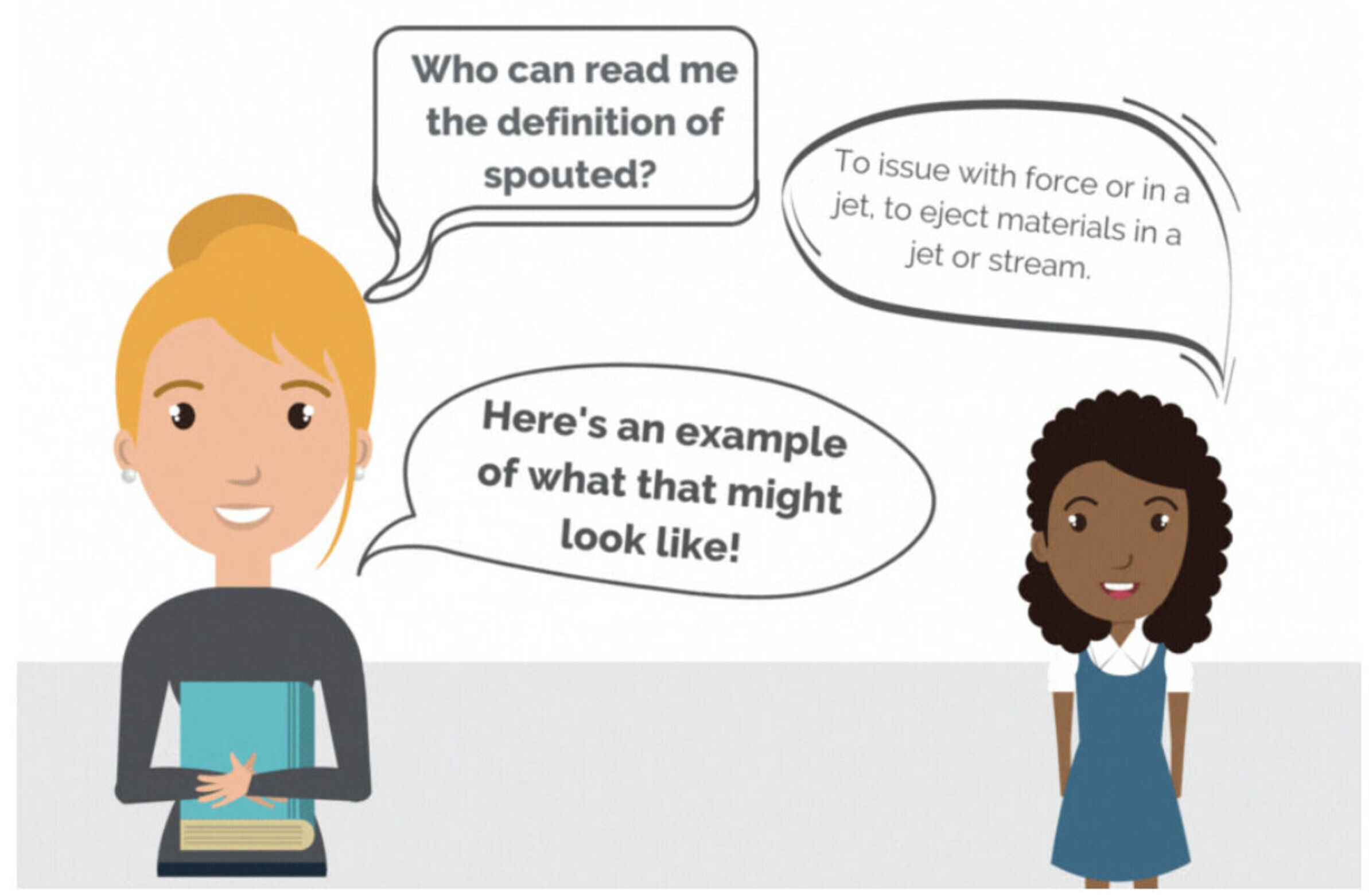
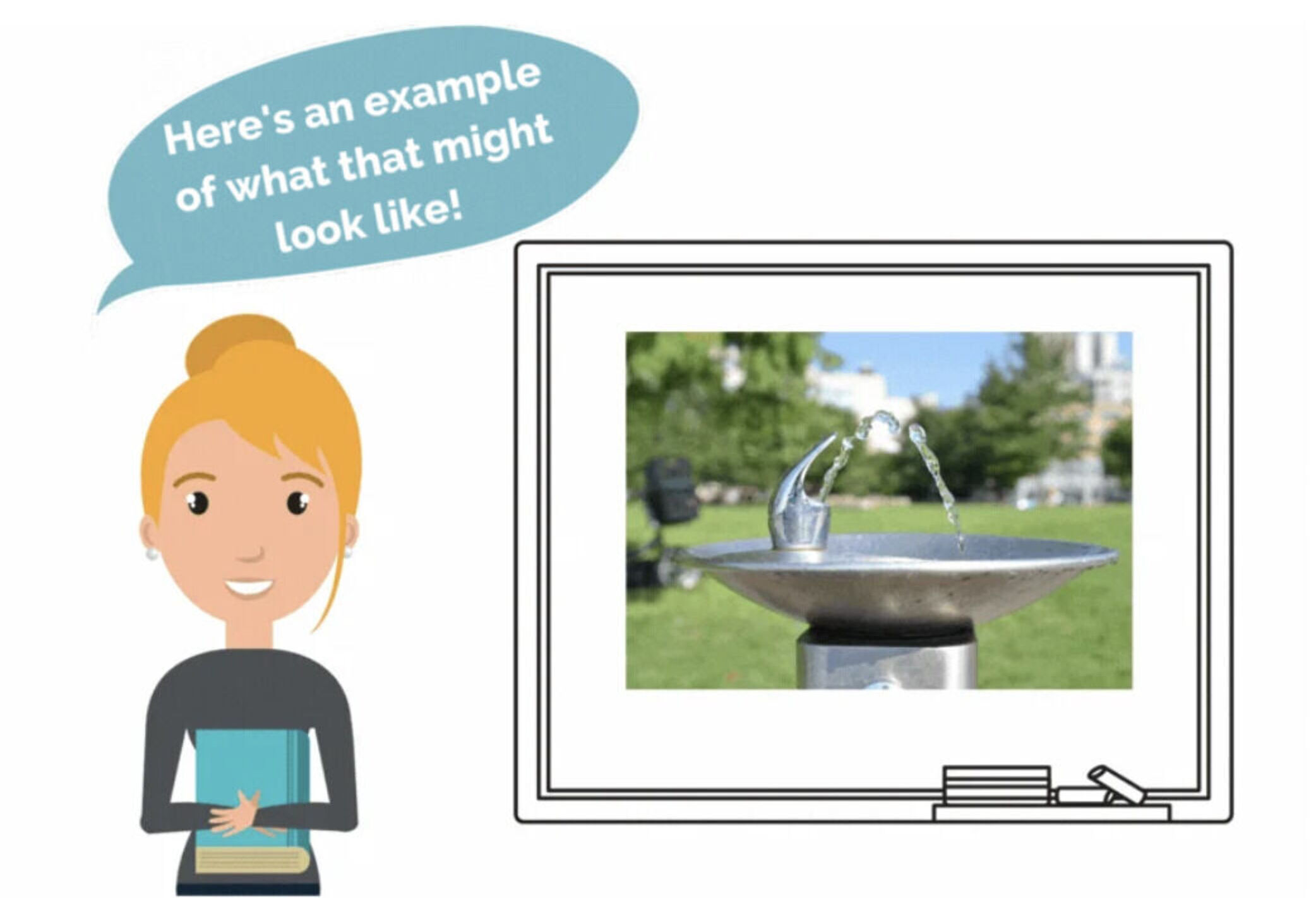
Why does this change matter? Examples help make abstract ideas real. This seemingly small tweak is a big deal for learning, because it’s a lot easier for students to recall concrete examples than abstract ideas.
A single example helps more than an abstract description, but it’s even better to use multiple, varied examples. If this teacher incorporated several different examples — that help students understand this idea can take many different forms — it might look like this:
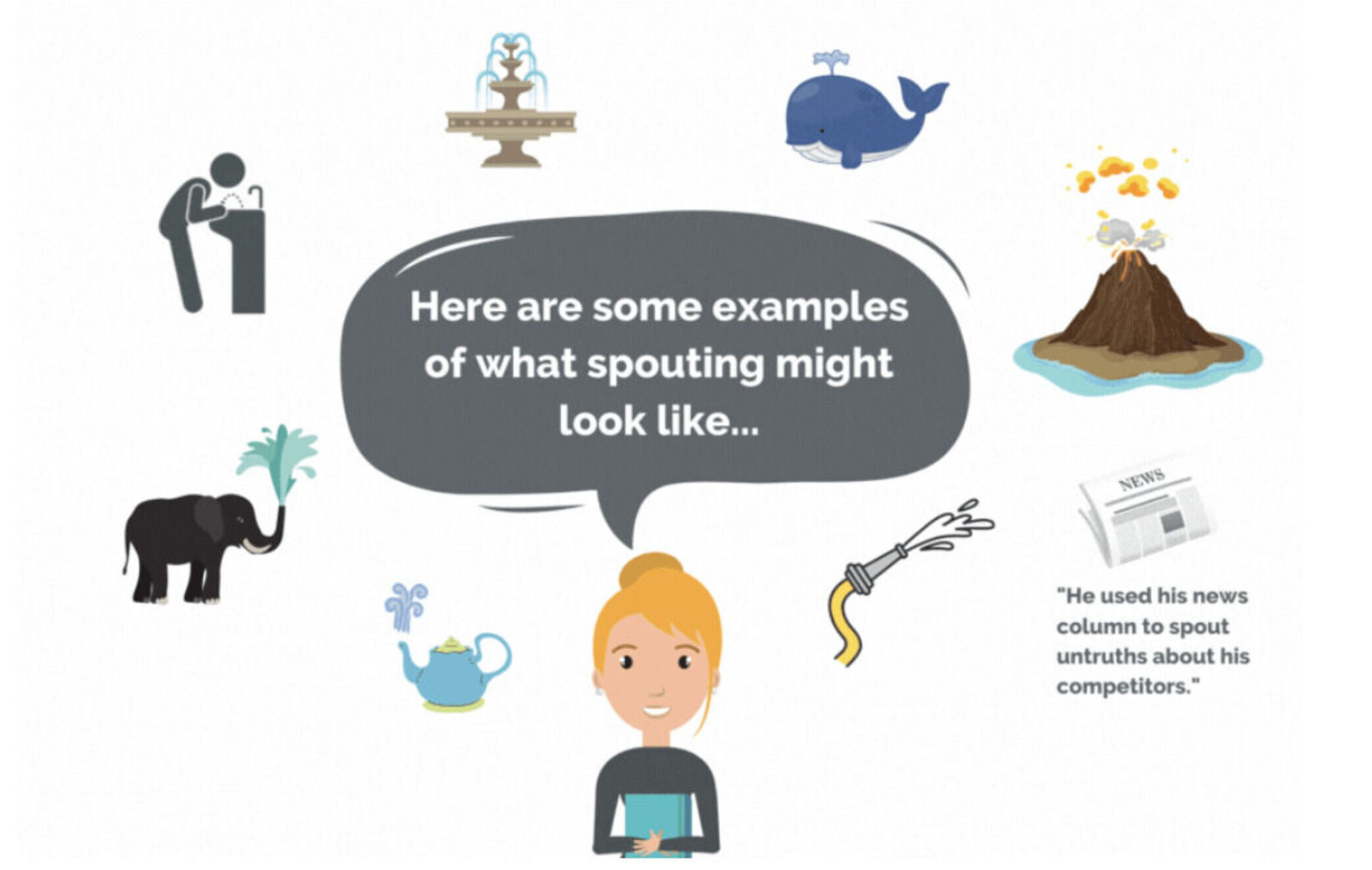
This is a major upgrade from just showing students a picture of a drinking fountain spouting water. Seeing several examples helps students to recognize “spouting” in a variety of new contexts. These varied examples also help students develop a more complex understanding of the word. (For instance, “spouting” has both literal and figurative uses.)
Varied examples can expand students’ thinking in ways that change their understanding of the world. For instance, if a teacher illustrates the word “doctor” with an image of a white male, a student might mistakenly believe only white men can be in that role. By showing students varied examples, including doctors of different races and genders, they’ll realize anyone can do that job, understanding the concept, rather than getting side-tracked by the surface-level features.
Using contrasting non-examples to draw students’ attention the boundaries of the concept
Using a non-example helps students know what something is not. This keeps students from overgeneralizing, like the student shown below.
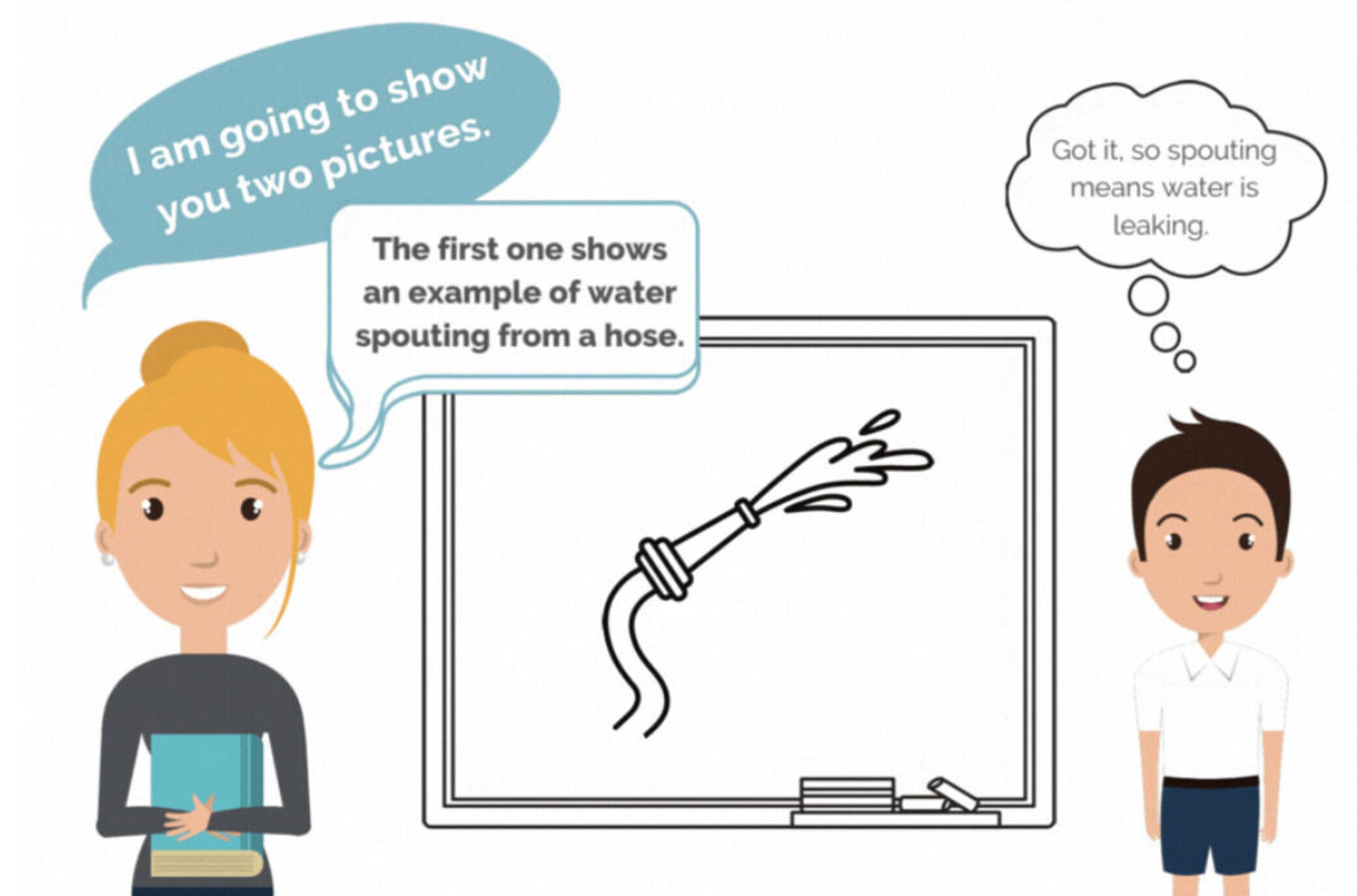
=

Non-examples can be especially powerful if used to target common student errors. The next time a student starts to make a mistake, they might think, “Wait! We talked about this exact situation in class!” and correct themselves. Incorporating non-examples is a relatively simple tweak that can help students to develop accurate mental schema around what a concept is and is not.
Using prompts to connect and distinguish between examples and non-examples
Simply showing students a variety of examples and non-examples isn’t enough to facilitate learning. Cognitive science research suggests that for students to be able to transfer learning to new contexts, they also need to be guided with prompts. The prompts will help them to articulate the connection between varied examples and unpack the distinctions between examples and non-examples. Take a look at the illustrations below:
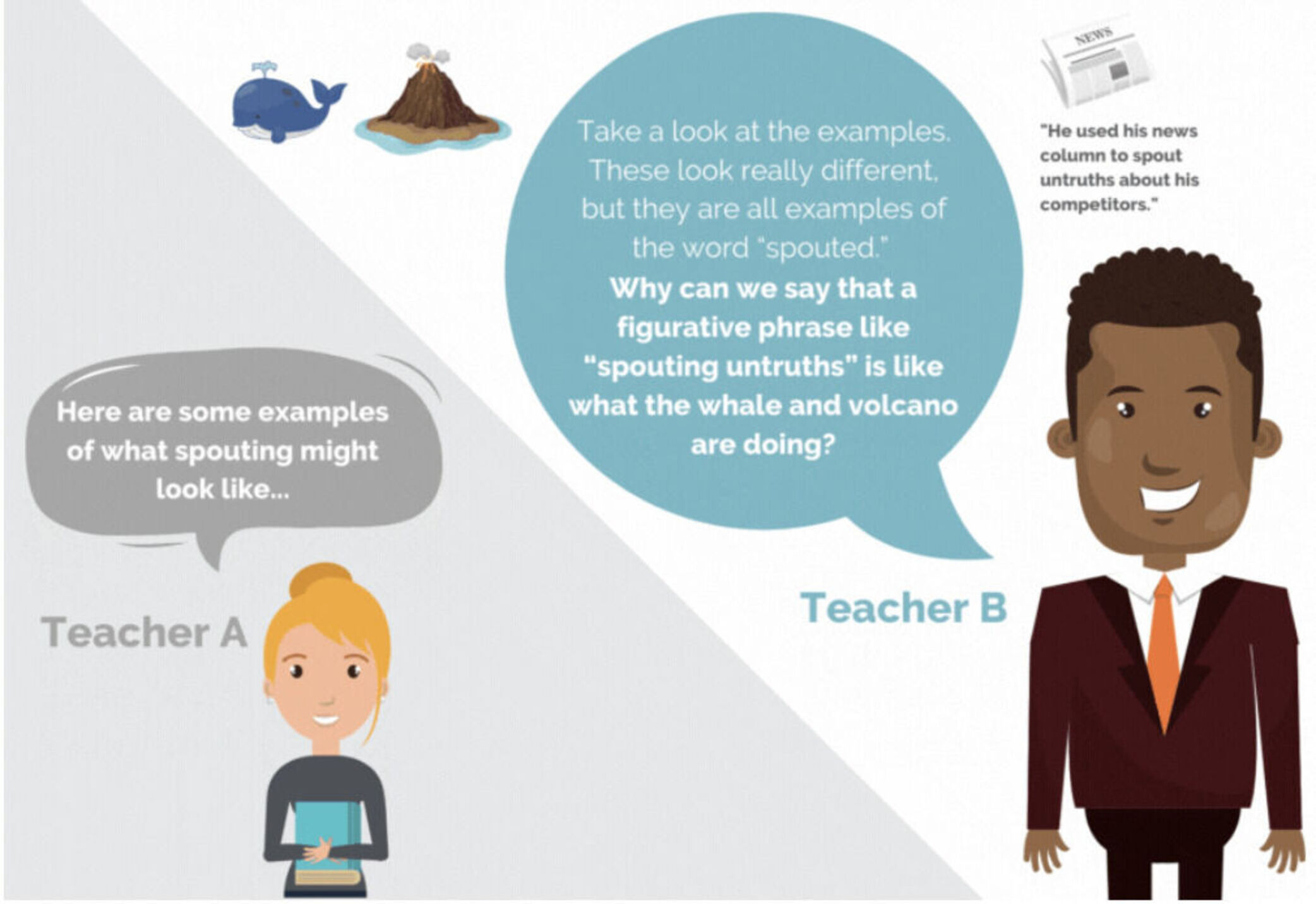
In addition to exposing students to the varied examples used by Teacher A, Teacher B is having students look across examples to articulate the important things the examples have in common. We can do the same thing with non-examples:
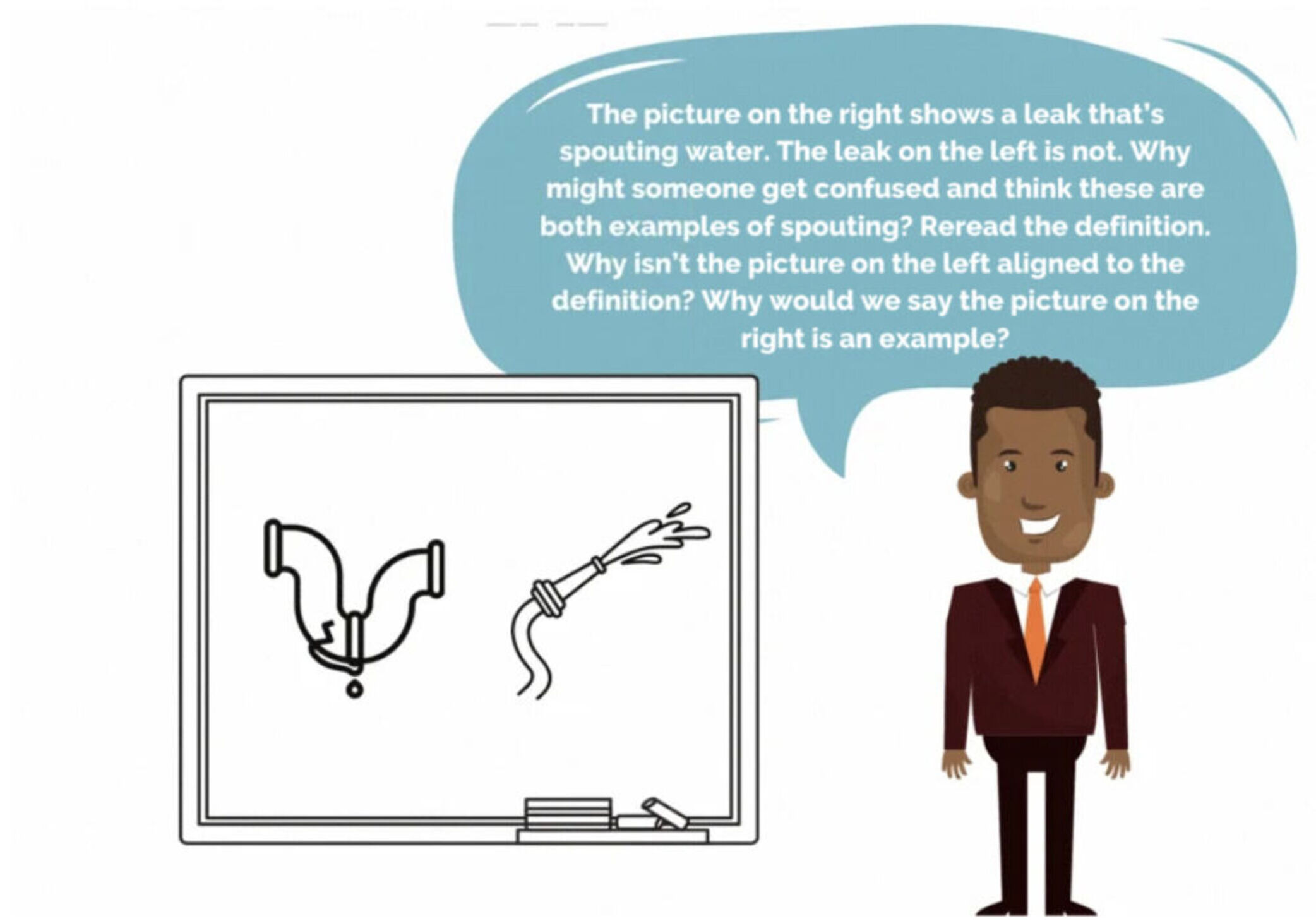
Prompts like this are key to student learning. Students are more likely to remember concepts they’ve processed deeply. When students read a definition or see an image, they may only think about it briefly, if at all. However, when teachers provide prompts like the ones in the illustration above, they ensure students think about and articulate key connections and distinctions, which makes it more likely that the new information gets stored in long-term memory.